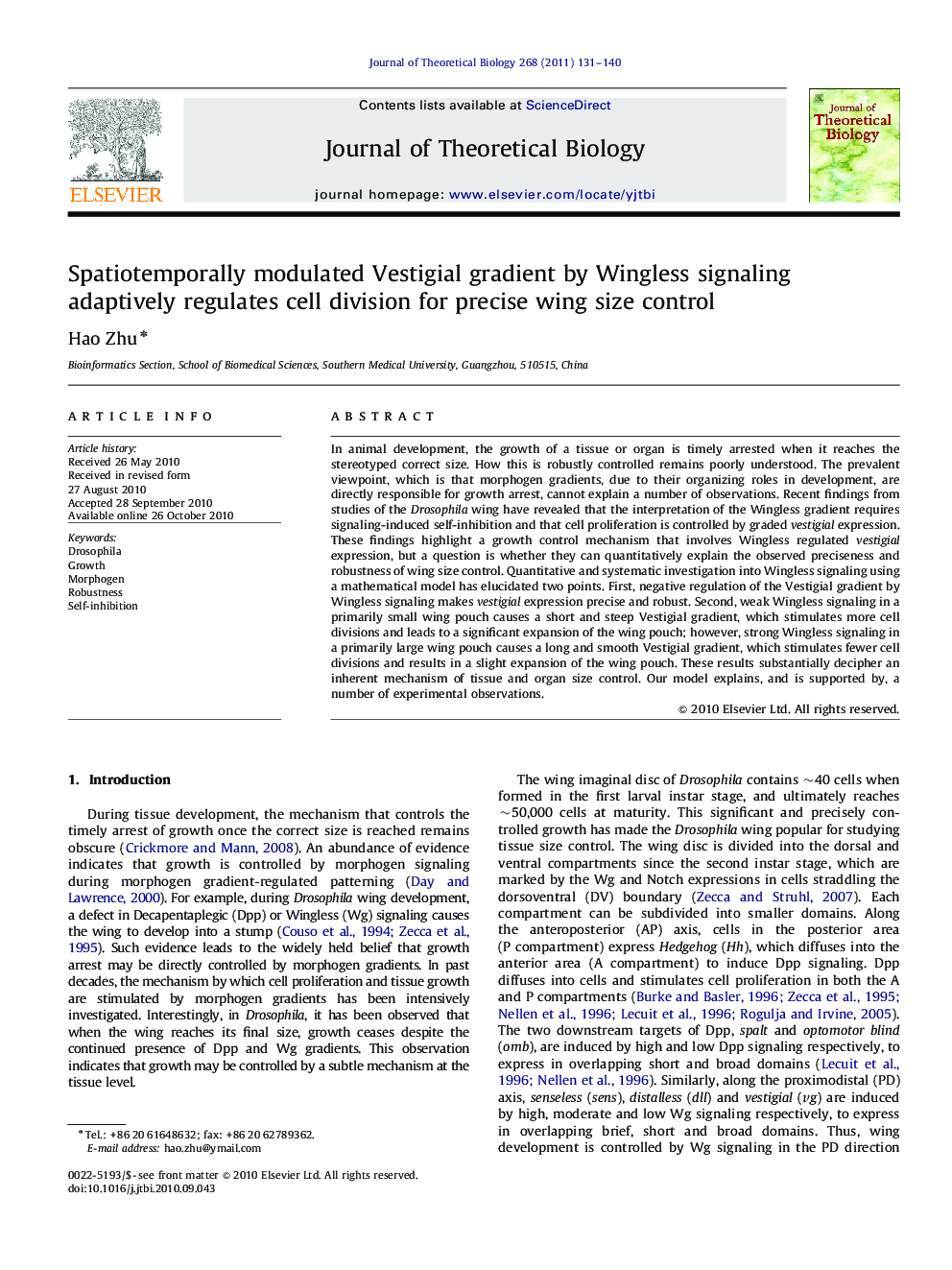| Article ID | Journal | Published Year | Pages | File Type |
|---|---|---|---|---|
| 4497289 | Journal of Theoretical Biology | 2011 | 10 Pages |
Abstract
In animal development, the growth of a tissue or organ is timely arrested when it reaches the stereotyped correct size. How this is robustly controlled remains poorly understood. The prevalent viewpoint, which is that morphogen gradients, due to their organizing roles in development, are directly responsible for growth arrest, cannot explain a number of observations. Recent findings from studies of the Drosophila wing have revealed that the interpretation of the Wingless gradient requires signaling-induced self-inhibition and that cell proliferation is controlled by graded vestigial expression. These findings highlight a growth control mechanism that involves Wingless regulated vestigial expression, but a question is whether they can quantitatively explain the observed preciseness and robustness of wing size control. Quantitative and systematic investigation into Wingless signaling using a mathematical model has elucidated two points. First, negative regulation of the Vestigial gradient by Wingless signaling makes vestigial expression precise and robust. Second, weak Wingless signaling in a primarily small wing pouch causes a short and steep Vestigial gradient, which stimulates more cell divisions and leads to a significant expansion of the wing pouch; however, strong Wingless signaling in a primarily large wing pouch causes a long and smooth Vestigial gradient, which stimulates fewer cell divisions and results in a slight expansion of the wing pouch. These results substantially decipher an inherent mechanism of tissue and organ size control. Our model explains, and is supported by, a number of experimental observations.
Related Topics
Life Sciences
Agricultural and Biological Sciences
Agricultural and Biological Sciences (General)
Authors
Hao Zhu,
